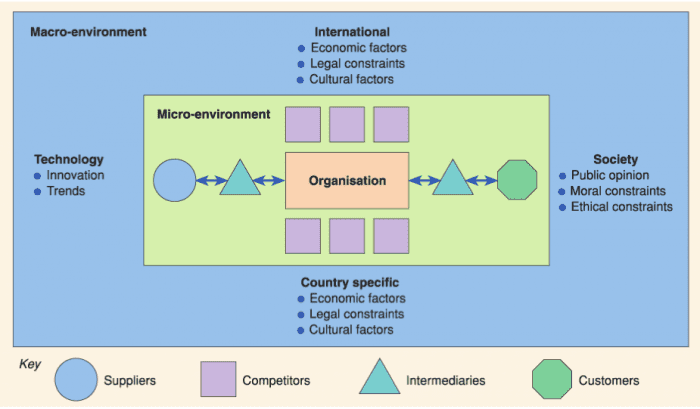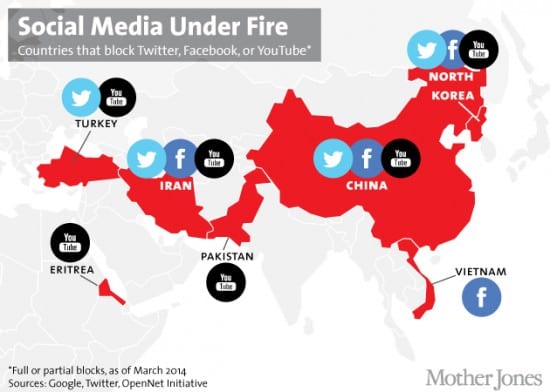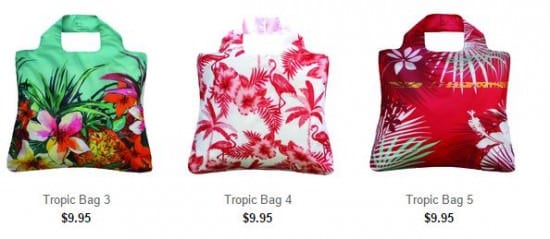Learn how the PESTLE analysis model can help you assess your business’ place in a variety of environments
PESTLE is one of a well-known series of acronyms used in business and marketing planning which summarizes how to review the broader forces, sometimes known as the 'macro-environment', that can shape a business.
What does PESTLE stand for?
PESTLE stands for:
- Political
- Economic
- Sociological
- Technological
- Legal
- Environmental
These are the contexts that a business should assess itself against to review competitors, markets, and the situation in which an organization finds itself.

Environment Factors affecting a business - Source: Chaffey and Ellis-Chadwick - Digital Marketing, Strategy, Implementation, and Practice
Digital marketing models guide
We rate PESTLE analysis as one of the top 20 marketing models which we feature in our digital marketing models guide. To learn about more models you can use to effectively assess your brand, download our digital marketing models guide.
Access the Digital marketing models guide
How to use PESTLE
The key technique with PESTLE is to dig deep. Many managers simply work through or tick off one element after another. There is real value in PESTLE, but only if you adopt a deeper approach and subsequently act on the information.
Let's look at each of the factors in turn, with examples:
Political
One of the biggest environments that can cause you to alter your products, ads, or even your overall brand perception is a country’s political views. While we like to think of the Internet as a global space, the social media and search engine platforms popular in your local market may not be the same as another country. For example, Facebook has been blocked in Iran, Vietnam, and North Korea. Twitter is currently banned in several other countries. This social media map, from Mother Jones, shows what's banned where.

This means if you're a business using Facebook in these areas, you cannot use these advertising options and it is less likely that your target audience can see your updates. It also means you need to consider local alternatives, for example, Sina Weibo in China and Facenama in Iran and Afghanistan.
What you should consider:
- International and local laws (including GDPR)
- Preferred and, potentially, banned platforms
- Why the political climate of a country may prevent your brand’s success
Economic
The economic environment your brand fits into can be assessed on a nationwide or demographic-specific level. For example, your brand may position itself with aesthetics that make it appeal to younger demographics, but are your products priced appropriately with that audience’s expected level of disposable income? These considerations can lead you to consider lowering your prices or offering a low-cost alternative to your main product/service (such as a ‘Basic’ or ‘Starter’ subscription plan, with other labeled ‘Premium’).

The arrival of the Internet created many pricing options that would have previously been impossible to imagine. For example:
- First visitor and return visitor pricing is available through the use of cookies
- 24-hour sales are easier to accommodate with a code to enter at checkout (e.g. "only available until midnight")
- Dynamic pricing based on availability and quantity is now used by most airlines and by many hotel groups and hotel chains
- Auction pricing focused on the highest and lowest offers (reverse auctions) is used by eBay, Priceline, and many others
- Software is sold as a service, with monthly payments rather than an upfront fee for a box of disks!
- Free, freemium and premium services have evolved with some services such as games, being free, but showing ads and premium options available for ad-free services
A major challenge to many businesses is price comparison websites, where the prices are compared in a situation that isn't always accurate as the delivery charge may be excluded.
What you should consider:
- Competitor prices and product/service offering
- Primary/secondary/tertiary target audiences and their individual economic situations
- Historical sales success and promotional offers that can push sales during expected downtimes
Sociological
Understanding what’s acceptable socially or within a culture as well as a greater appreciation of different societies and beliefs is more available online than ever before. This knowledge has created opportunities and has opened new markets. One of my favorite examples of a company adapting to opportunities is Moonpig. There may have been a time where they offered a limited range of cards for birthdays, weddings, and events like Christmas. They now offer a wide range of cards for all occasions and religions.

Does your business know its target audience? What level of access to the internet do they have? If they’re in that group without access, how can you make contact?
Interestingly, this question led to the development of Babajob. India has one of the world’s lowest levels of internet penetration, so these entrepreneurs started a job service, accessible via SMS. All you need is a mobile phone.
What you should consider:
- The beliefs, customs, and standards held by customers who may be of a different faith, race, gender, and socio-economic background to your average customer
- Internet usage habits (which can differ greatly on customer age)
- Access to the internet (which can differ between countries and people of lower levels of income)
Technological
This issue is an easier element to understand within the PESTLE mix when it comes to digital marketing. It's all about the technology being used, whether that's desktop or mobile, tablets, or wearables.
All brands must consider how their website is displayed across the wide variety of devices and screen dimensions available that their customers could be using. The website must be usable across all channels. Pay close attention to how your customers are finding you and cater to their behavior. British Airways discovered that its customers used Twitter as a self-serve customer service platform. Eventually, BA decided to play the role given to them by their customers.
You may also need to stay on top of the popularity and use of different technological platforms, in case an audience you reach through it changes. Social media is a large component of this, as the demographics of available users or their common behavior might change.
What you should consider:
- Screen size and where the internet is accessed
- How you can make your user journeys easier
- Whether new technology makes elements of your marketing mix redundant
Legal
Legal issues online are a major consideration. A legal oversight can not only affect your bottom line, but also your brand’s perception. The more public of a mistake, the more your brand can be hurt, which risks alienating a lucrative target demographic.
For example, when setting up social media pages, you may need to adapt to meet different laws in different places. If you’re setting up a Facebook page to promote alcoholic drinks, it’s essential to age-gate and country-gate; ensuring your page is only available to those aged over 18 and those in the UK. If you ignore this, you could be breaking laws in other jurisdictions and this could have a negative impact on your business.
Spotify, the music streaming service, has been available in the USA since it started in 2013 but was not available in Canada until October 2014, quite possibly due to legal reasons. There was no clarity about the royalty rate that companies like Spotify would have to pay. In May 2014, the Copyright Board of Canada issued a decision on the royalty rate that music streaming services should pay for the use of recordings. Under the ruling, the payment will be about 10.2 cents in royalties for every 1,000 plays. It is interesting to note that this rate is substantially lower than the one required by some members of the Canadian music industry, who were aiming for between $1 and $2.30.

What you should consider:
- Product placement and promotional content
- Copyright infringement
- Data protection
Environmental
The environment is a fast-growing consideration in marketing. The biggest impact has been on packaging and waste. Companies are needing to re-think packaging in some countries, such as Ireland, where carrier bags are a chargeable item at the point of sale. This in itself has created a business opportunity for companies like Envirosax, selling fold-up bags that fit into handbags and pockets.

Fully assessing your brand’s environmental positioning can be difficult depending on the product/service you provide, but try to consider every aspect of what you offer. If you sell food products or cosmetics, look at how each ingredient is sourced and tested.
Any positive changes you make to your brand’s environmental standing can boost your social profile and make you more appealing to eco-minded customers. You only need to look at the impact that Fairtrade has made in ensuring producers from developing countries are paid a fair price for their work to see how an eco-friendly approach can help your brand.
What you should consider:
- Product and packing size
- Sourcing, trading, and testing ethics of your product/service components
- Current environmental programs/partnerships your brand can participate in
What to watch for in PESTLE analysis?
Whatever your size of business, PESTLE can identify threats and highlight opportunities. Successful companies in the digital age see these opportunities and adapt or create new product ranges and boldly move into new markets. However, it should be noted that each of your assessments should be made with the customer in mind to ensure that your analysis can lead to changes that are going to affect your business for the better.
One company that ignored broader PESTLE factors for years was HMV, a UK retailer of music with a long heritage. Originally selling ‘vinyl records’, it failed to address the sociological impact of the internet, especially online retailing. Its sales continued to drop as fewer people walked into a physical store on the high street to buy music. Emerging competitors such as Napster and (later) Spotify offered music streaming and download services, effectively making the HMV model redundant.
The downfall of HMV has been in part explained by Philip Beeching who was part of the ad agency team that had worked for HMV for some time. He said that when re-pitching for the HMV work after a new MD had been appointed, they pulled out all the stops and told the MD and new team of directors "The three greatest threats to HMV are online retailers, downloadable music, and supermarkets discounting loss leader product". The tragedy was that the MD had perhaps not had the same research and reacted badly to this information. As Beeching commented, “Suddenly I realized the MD had stopped the meeting and was visibly angry.”























